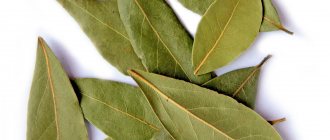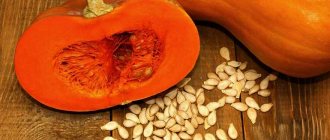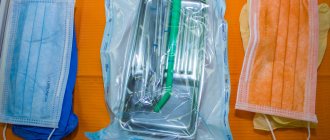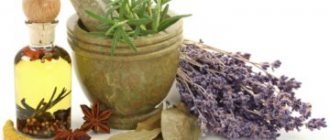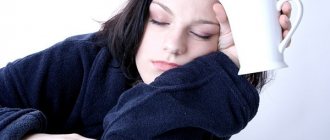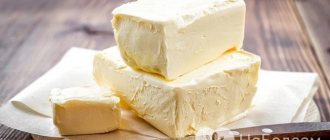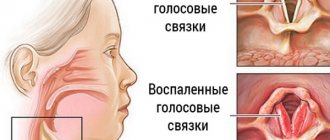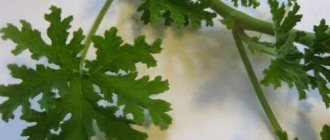532
0
Lymphoma is an oncological disease of varying degrees of aggressiveness and area of damage. A common feature of all varieties of this pathology is the effect on the lymph nodes, organs of the lymphatic system and, less often, on non-lymphatic organs.
Contrary to the claims of healers and adherents of alternative treatment, no cases of successful fight against lymphoma using folk remedies alone have been recorded in official medical sources. But unconventional approaches may well enhance the effect of cytostatic drugs used in chemotherapy, as well as improve the body’s condition after courses of aggressive treatment.
Next - effective folk remedies for treating lymphoma.
How to treat lymphoma with folk remedies
Lymphoma, Hodgkin's disease, is a disease that manifests itself as a malignant tumor that tends to affect the lymphatic system. The lymphatic system plays an important role in the functioning of the body. Thanks to it, it ensures the cleansing of all tissues from toxins, the movement of lymphocytes throughout the body and its protection from infections.
As it turned out, traditional medicine methods can alleviate suffering and even save from this disease. As for the causes of lymphoma, we can say that there are no specific factors influencing the development of this oncology. One thing is clear: tumor development begins after inflammation of the lymph nodes. A weak immune system can primarily affect inflammation or tumor development. Lymphoma is not considered an infectious disease and cannot be passed from one person to another.
People with immunodeficiency are at risk
As with other cancers, the exact causes of lymphoma are still unclear. However, there are provoking factors that increase the likelihood of developing this disease.
Non-Hodgkin's lymphomas may be associated with the following conditions:
- Various immune disorders: autoimmune diseases (for example, autoimmune thyroiditis), HIV infection, some hereditary syndromes;
- Chronic viral hepatitis B and C increase the risk of lymphoma in patients with impaired immunity (primarily with HIV infection);
- Infectious diseases. For example, the role of the Epstein-Barr virus in the development of epidemic Burkitt's lymphoma has been established;
- Infection with Helicobacter pylori, which causes stomach ulcers, according to some data, can provoke the development of gastric lymphomas;
- Chemotherapy leading to decreased immunity;
- Obesity;
- Elderly age;
- Radiation exposure;
- Exposure to certain chemicals (benzene and aromatic hydrocarbons, insecticides and pesticides);
- Ethnicity. People of the white race are more susceptible to these diseases than representatives of the Negroid and Mongoloid races.
Risk factors for Hodgkin lymphoma include:
- Age. Most often, this disease is diagnosed in people aged 20 to 30 years, or in patients over 55 years of age;
- Floor. Men are more likely than women to get this type of lymphoma.
- Family history. Siblings of the affected person are more likely to be at risk;
- Infectious mononucleosis is an acute viral disease that also affects the lymphatic system;
- Various immune disorders, including HIV.
Treatment of lymphoma with folk remedies begins with diagnosis
Symptoms that characterize lymphoma include:
- painless enlargement of the lymph glands in the abdomen, neck, groin or armpits;
- abdominal pain, nausea, vomiting;
- cough, shortness of breath;
- red spots on the skin.
And also, not always and not in all patients, lymphoma may be accompanied by:
- night sweat;
- elevated temperature;
- itching, widespread over all areas of the skin, not accompanied by any rash;
- sudden weight loss;
- great fatigue.
Since it is quite difficult to diagnose lymphoma, all of the listed symptoms may be an indicator of a completely different disease, so do not get upset quickly, but rather consult a doctor.
How to treat a disease with folk remedies
1. Celandine and its anticancer properties have been known since ancient times. It should be prepared during the flowering period, around the beginning of May. The roots, leaves, and stem should be carefully cleaned of dust and dirt, but they should not be washed. Everything should be finely chopped, preferably with a ceramic knife, and compacted in a three-liter jar. Instead of a lid, use gauze.
You should pierce the raw material every day using a wooden stick. After 4 days, squeeze out the cake and leave the resulting juice for 48 hours. Pour the cake into a bottle of vodka and leave it for 10 days, then squeeze it out again and put it in the same way as juice to settle.
The juice is used to treat lymphoma, and the vodka infusion is used to treat wounds, cuts and other things. You should drink 1 tbsp juice. l. Morning and evening, washed down with a glass of milk. The course of treatment ends after drinking half a liter of juice. Depending on the onset of improvements, the course can be repeated.
2. Lymphoma can also be treated with wormwood. First, grind the wormwood, then pour 3 tablespoons into a glass bowl. After this, you need to prepare a thicker solution from gelatin and carefully pour it into the wormwood.
Then take a needle and roll gelatin balls the size of a tablet and place them on paper greased with vegetable oil. When the balls dry out a little, they need to be transferred to dry paper and left until completely dry. To cure the disease, you should swallow 2-3 wormwood balls every day.
3. When nut fruits crack, you need to prepare a nut tincture from the green shell. To do this, you need to crush the shell and pour it into a 1 liter jar, fill it with high-quality vodka.
Then you should seal the jar with polyethylene and leave for 10 days, shaking the jar periodically. After the time has passed, you need to take 1 tbsp of tincture. spoon per day.
4. To prepare the next decoction, you will need: medicinal calendula, large plantain leaves and agrimony. All herbs need to be mixed 1 spoon at a time, add 0.5 liters of water and boil for 7-10 minutes. The slightly cooled drink should be used to cleanse the lymph, adding honey or lemon juice to it.
5. You can collect 25 chestnuts far from the highway and, cutting them in half, put them in a jar. Then you need to chop and mix the herbs: celandine, calendula, chamomile, coltsfoot, millennial. Then you need to put them in a gauze bag, adding a piece of flint there.
Place the bag in the jar as well. Pour whey and 1 spoon of sour cream into a jar. Then you need to close the jar using gauze and leave for 15-20 days. After a while, you can drain 1 glass at a time and drink it little by little throughout the day.
6. Aconite roots in the amount of 1 tbsp. spoons should be filled with medical alcohol in the amount of 0.2 liters. Leave in a tightly closed bottle for 15 days in a dark, preferably cool place. After a period of time, you need to start treatment.
- On the first day - 1 drop,
- second day – 2 drops,
- so get to 20.
If the patient does not complain of dizziness or stomach pain, you can go up to 30 drops, then, taking one drop per day, go down to one.
Lymphoma is a neoplasm that develops from lymphatic tissue cells and is a tumor that responds well to anticancer therapy. The first symptoms of the pathology are nonspecific: a person often suffers from colds, suffers from a rash of unknown origin, and notices enlarged lymph nodes. Only a specialized specialist, an oncologist, can diagnose the disease and prescribe adequate therapy.
Folk remedies also have the ability to improve the body's resistance to developing pathology. However, herbal medicines, alas, cannot completely defeat cancer. Use the recommendations of traditional healers only after they have been approved by your doctor.
Compositions of medicinal herbs
1. Pour two liters of alcohol into the well-mixed ingredients: Rhodiola rosea root (30 g), White foot root (20 g), Katrana Tatar root (150 g), Dubrovnik grass (50 g).
Leave for 1 month and pour into a bottle to begin treatment.
On the first day, dilute 1 drop in a glass of water, add 1 drop every day, after 35 drops per day, start subtracting 1 drop, and so reach 1 drop per day. If necessary, the course of treatment must be repeated.
2. You should mix: chicory root, hawkweed grass, dandelion roots, ferula roots, dubrovnik grass and marigold flowers. Pour 1 tbsp with a glass of boiling water. l. such a mixture. After half an hour you can drink. 1 glass should be spread over 1 day, and so on for a whole month.
3. Grind and mix: wormwood herb, calamus root, plantain leaves, brugmansia flowers, Rhodiola rosea roots, Dubrovnik herb. Pour the resulting mixture with 2 liters of alcohol and leave for a month. Treatment: drink once a day, first diluting 1 drop in a glass of water, adding 1 every day, having reached 45 drops, start taking 1 drop per day and so on until 1 drop.
Using the traditional medicine outlined above, you can defeat a terrible illness, but you should not just self-medicate. You definitely need to see a doctor who will constantly monitor the condition of your body.
Folk remedies for the treatment of lymphoma
Treatment of lymphoma with folk remedies often involves the use of herbal medicine. This is part of homeopathic therapy based on herbal and plant extracts that contain large amounts of beneficial amino acids, vitamins and microelements. They saturate infusions and decoctions with tannins, valuable alkaloids, and organic salts that have a beneficial effect on the patient’s body in case of cancer. But before choosing a prescription, you should consult your doctor, be sure to continue drug therapy, and monitor changes in the body.
Treatment of lymphoma with celandine
Treatment of Hodgkin's lymphoma with folk remedies is recommended to begin with the use of celandine. The entire plant, including stems and roots, is used to prepare the medicine. It is infused with vodka in a dark place for at least 10–14 days, after which the pulp is squeezed out. In the morning and evening you can drink 1-2 tbsp. of this juice, washed down with cow's milk. The course lasts at least 3–4 weeks.
Birch buds
To prepare a remedy for lymphoma, place 3 tablespoons in a clean jar or thermos. dry or fresh birch buds, pouring boiling water over them (200–300 ml). After infusion, the tea can be drunk 3 times a day before meals. The infusion is effective against tumors in the digestive tract, supports intestinal function after chemotherapy, and helps relieve unpleasant symptoms.
Nut tincture
Treatment of lymphoma with folk remedies includes tincture of green nuts. You need to grind the unripe fruits together with the peel into a pulp, put them in a large jar and fill them with alcohol. After infusion for 10–14 days, the product can be taken 1–2 times in a spoonful.
How is hemlock used to treat lymphoma?
Lymphoma of small lymphocytes can be treated with toxic organic acids. Hemlock is a unique plant with poisonous juice, which destroys the disease at different stages and helps reduce tumors. Fresh stems and flowers must be thoroughly chopped, poured into a jar and filled with high-quality vodka without additives, left for 3 weeks in a dark place. The intake should be carried out according to the following scheme: 10 drops 3 times a day, add 1 drop every day until the number reaches 40 drops. After a break of 10 days, the scheme is used in the reverse order.
Treatment of lymphoma with wormwood
Wormwood contains a large amount of tannins and organic compounds that help destroy malignant cells in the lymph nodes. To prepare the medicine, the dried plant is ground into powder and mixed with a gelatin solution, forming miniature balls. After drying, you can store them in the refrigerator and take a few pieces on an empty stomach before breakfast.
Chaga for lymphoma
Birch mushroom helps strengthen the immune system and supports the lymphatic system, helping the body better tolerate the course of chemotherapy. This infusion can be drunk daily, 1 spoon before meals, 3-4 times a day. The infusion contains a large amount of vitamins, amino acids and active substances, restores appetite.
Propolis
The beekeeping product suppresses tumor growth, acting as a cytostatic, improves well-being, and serves to support the body. If lymphoma is diagnosed, you need to drink 30–40 drops of ready-made tincture from the pharmacy every day. It can be mixed with celandine, calendula or dandelion root.
Treatment according to the method of N. Shevchenko
Treatment of non-Hodgkin's lymphoma with folk remedies often begins with the Shevchenko method. To do this, you need to take a specially prepared emulsion 3 times a day: take 30 ml of sunflower oil for 30 ml of vodka, stir until smooth. The course lasts at least 10 days, after which the body needs to rest. It is recommended to use virgin oil, which contains a large amount of saturated acids and vitamins.
Treatment with birch tar
Fresh birch tar must be thoroughly washed several times, mixed with ammonia (10–15 ml) until smooth, and flour calcined in a frying pan added for thickness. The resulting mass is rolled into balls. They can be taken 1-2 pieces 3 times a day. Some herbalists recommend treating lymphoma with a decoction that includes tar, calendula flowers, chamomile, and plantain root.
Tincture of colchicum (colchicium)
The herbal infusion is used in the period after radiation therapy or a course of chemotherapy to improve the functioning of the lymphatic and hematopoietic systems. You need to finely chop the onion, steep it in a glass of pure alcohol with the addition of a few scorzonera leaves. The drug is taken 2-3 drops, gradually increasing the dose to ½ teaspoon.
Chestnut beer
To prepare a healing drink, you need to peel and chop 25–30 ripe chestnuts, put the halves in a clean glass jar. Then add a piece of silicon mineral, a few tablespoons of chamomile and celandine to enhance the effect. The resulting dry mass is filled with fresh whey to the top and left to ferment in a warm place for several days. The composition should be consumed 1 glass 2 times a day for 2-3 weeks.
Sarcosoma mushroom
Sarcosoma are mushrooms that resemble balls that grow on sandy soil in spruce forests or under pine trees. The extract is effective for treating cancer and reducing metastases. Before use, the collected mushrooms are washed and placed in alcohol for several minutes. After this, using a regular syringe, they try to draw out the liquid juice from the stem and cap. Every day the patient should be given 1 cc of the drug intramuscularly, gradually increasing the dose to 3 ccs. When treating lymphoma, the course lasts at least 3 months.
Selenium tincture
Selenium is a powerful antioxidant that inhibits the growth of atypical cells. Selenium tincture is recommended for the treatment of Hodgkin's lymphoma. A piece of mineral measuring 150 grams. you need to fill with purified water and shake 50–55 times. The product is infused for 2 days, during which shaking must be repeated. The composition is taken 4-5 drops once a day for a course of up to 3 months.
Treatment of lymphoma at home with folk remedies, symptoms and types of disease
This is a malignant disease of the lymphatic system that is found on internal organs. It is very important to consult a doctor in time, since the disease progresses quite quickly. Professional specialists know how to properly treat lymphoma with folk remedies at home at any stage, and you, using unconventional methods, can help increase the effectiveness of drug procedures. In other words, an integrated approach to treatment will increase the likelihood of recovery.
Treatment according to the method of N. Shevchenko
The most effective treatment for lymphoma as a folk remedy is therapy according to N. Shevchenko’s method. To prepare a medicinal infusion, you need to pour a small amount (30-50 ml) of vodka with the same amount of unrefined vegetable oil. The ingredients are mixed well until a homogeneous solution is obtained. The remedy should be used three times a day at equal intervals.
This drink is not washed down with water and is not eaten. After a ten-day course of treatment, a five-day break is necessary. After the healing remedy is drunk, it is not recommended to eat anything for another hour after that.
Important! According to reviews, when treating Hodgkin's lymphoma with a folk remedy, it is worth limiting the consumption of dairy products, spicy dishes and desserts, and fatty meats. Only a little honey is allowed. Treatment with this method can continue continuously for up to three years.
Lymphoma is not a death sentence, as many patients think. Today, many cases of complete recovery have been officially recorded. However, it should be remembered that it is impossible to get rid of cancer only by taking folk remedies. Traditional medicine is only a good addition to treatment.
How does skin disease manifest?
Tumor lesions of the skin, which arise as a result of malignant proliferation of lymphocytes in it, are called lymphoma. Depending on the type of lymphocytes, there are T- and B-cells. When the disease occurs, nodules, plaques, or erythrodermic areas form on the skin, and this is accompanied by enlarged lymph nodes. Diagnosis of skin lymphoma before treatment using traditional recipes or conservative methods is carried out by histological examination of biopsy material from the affected area. When treating lymphoma with folk remedies, chemotherapy, radiation therapy, PUVA therapy, etc. are not used.
This disease is characterized by polymorphism of the rash (spots, plaque nodes,) itching, as well as enlargement of peripheral lymph nodes. Depending on the degree of malignancy, lymphomas are classified into grades I–III. And according to its clinical manifestations: plaque, nodular, and also erythrodermic forms.
The nodular form of T-cell lymphoma of the skin of the first stage is characterized by small flat nodules the size of a millet grain. They have a yellowish or lilac color, are located on the skin in groups and tend to spontaneously regress. With a more malignant course, the nodules may enlarge, acquire a cherry color and lose their tendency to group. Patients die from metastases after about 2-5 years.
Sometimes a small nodular form of T-cell lymphoma of the skin occurs; it is characterized by follicular nodules that merge into plaques with superficial peeling, reminiscent of psoriasis.
The plaque form of cutaneous T-cell lymphoma of the first stage is characterized by ill-defined plaques that have a yellowish color. Their size can be larger than the palm of your hand. But gradually they resolve with the formation of areas of atrophy, as well as hyperpigmentation.
Stage II plaque lymphoma is the most common - it occurs in 26% of all types of skin tumors. First, flaky, bright pink spots appear on the skin, after which stagnant red plaques form in their place, and the surface often becomes wet. At the tumor stage, plaques on the skin change to flat nodules the size of an orange with necrosis in the center of the formation.
Treatment with folk remedies and conservative methods
This therapy involves bone marrow transplantation and removal of malignant tumors.
Chemotherapy is a treatment method using drugs that destroy tumor cells. This category also includes radiotherapy, which is based on the use of X-rays to destroy malignant tumors.
Biological therapy - to cure lymphoma, chemicals are used that are obtained from the patient's own cells. This procedure is performed to activate immune mechanisms that will work against cancer.
Lymphoma - symptoms and treatment
If you have enlarged lymph nodes, it is strictly forbidden to self-medicate. It is impossible to warm up the lymph nodes, as this can lead to the spread of infection or generalization of the tumor process. You should also not apply ice, as this will only increase inflammation and worsen the patient’s general condition.
Treatment for Hodgkin's lymphoma involves the use of radiation therapy, drug therapy, and a combination of both. For stages I and II of Hodgkin's disease, dacarbazine, vinblastine, bleomycin and doxorubicin are prescribed. These medications do not cause serious complications. For complete cure, which is possible at these stages in 95% of cancer patients, at least two courses of these drugs are required; Stages III and IV of Hodgkin lymphoma require 6-8 courses of treatment with a complex of drugs such as procarbazine, vincristine, cyclophosphamide, adriamycin, etoposide and blenoxan. They are also effective, but when prescribed there is a risk of developing secondary cancer or leukemia [7][10].
Treatment of non-Hodgkin's lymphoma. Non-Hodgkin's lymphomas are treated with radiation therapy and/or chemotherapy. In some cases, chemotherapy is performed followed by transplantation of mesenchymal stem cells or bone marrow as a source of stem cells [8][9]. Recently, encouraging treatment results have been obtained using monoclonal antibodies. It should be noted that in each case the doctor selects treatment individually depending on the general condition of the patient, concomitant pathology and tumor type in accordance with the standards of chemotherapy and radiation therapy. In some cases (with a larger local conglomerate of nodes, a significantly enlarged spleen, etc.), they resort to surgical removal of the affected organ [5][6]. Currently, molecular genetic studies of tumor cells, typing, creation of specific sera and vaccines against each type of tumor individually for each patient are being developed, but this is the medicine of the future and is still available to a few medical centers.
Clinical guidelines for determining treatment effectiveness [4][5]
The effectiveness of treatment should be assessed after 2-3 courses of chemotherapy while maintaining a stable clinical picture for at least two weeks. Ultrasound, CT, MRI or PET are used to evaluate:
- dynamics of the size of lymph nodes;
- tumor size if the liver or spleen is affected;
Immunohistochemical examination of the bone marrow is also performed to verify tumor cells. Depending on the data obtained, the effectiveness of treatment is assessed as:
- complete remission;
- partial remission;
- uncertain complete remission;
- partial remission and stabilization of the disease;
- relapse.
The effectiveness assessment is also determined in the middle of treatment, taking into account the size of the lymph nodes, the number of affected lymph nodes, the size of the spleen, and the result of bone marrow puncture.
In the literature of recent years [11][12], studies have appeared on the prognostic value of microRNAs (small non-coding RNA molecules) and other markers that make it possible to determine the possibility of relapse in the early stages and after a course of treatment. These modern markers are the most sensitive methods, but are still at the stage of clinical trials.
Is it possible to cure lymphoma with folk remedies and how?
Lymphoma is an oncological disease of varying degrees of aggressiveness and area of damage. A common feature of all varieties of this pathology is the effect on the lymph nodes, organs of the lymphatic system and, less often, on non-lymphatic organs.
Contrary to the claims of healers and adherents of alternative treatment, no cases of successful fight against lymphoma using folk remedies alone have been recorded in official medical sources. But unconventional approaches may well enhance the effect of cytostatic drugs used in chemotherapy, as well as improve the body’s condition after courses of aggressive treatment.
Next - effective folk remedies for treating lymphoma.
Treatment of lymphoma with herbal teas
Effective treatment with folk remedies for lymphoma can be carried out using healing herbs.
Herbs, when combined, enhance each other's effects. Most recommended:
- chamomile, coltsfoot, celandine;
- elderberry, meadow geranium, elecampane;
- burnet, angelica, meadowsweet;
- black currant leaves, parsley root, dandelion root.
For inflammation of the lymph nodes, you can use a collection of black alder cones mixed with calendula.
Shevchenko's technique
The author of this method of treating lymphoma suggests preparing your own emulsion from 30 ml of vodka and 30 ml of unrefined sunflower oil. The mixture should be taken orally three times a day, an hour before meals, without drinking.
The duration of the courses is 10 days, they must be repeated with a five-day break. At the same time, N. Shevchenko recommends adhering to a therapeutic diet that excludes foods rich in animal fats, dairy products, confectionery, sugar and hot spices.
Juices and tinctures
Their action is aimed mainly at increasing immunity lost during treatment, normalizing the functioning of internal organs not affected by the disease but affected by chemotherapy, giving the body strength and improving overall well-being. For this purpose, it is recommended to take:
- Sea buckthorn juice diluted with clean water - no more than 2 glasses per day;
- alcohol tincture of green walnut shells - a teaspoon 3 times a day;
- alcohol tincture of colchicum and scorzonera bulbs - taken according to the scheme, starting with 2 drops 3 times a day and increasing to 6 drops 3 times a day in increments of 2 drops. After the fifth day, the number of drops should be reduced in the same order;
- tincture of aconite, in addition to its general effect, has an anti-inflammatory and analgesic effect. It is sold ready-made with attached instructions that describe the dosage regimen;
- vodka tincture of celandine cake - used for external use for skin lymphoma;
- Celandine juice - it must be diluted with milk and taken orally.
Colchicum
An infusion of crocus (colchicium) stimulates the body's renewal process and transforms natural immunity. To make the product, you need to chop 1 onion of this plant with a knife and pour 200 milliliters of alcohol. Infuse for a week. Next, filter and add scorzonera root (10 g) to the alcohol solution. Then leave for another 3 days. On the 1st day you need to use 2 drops 3 times a day before meals (dilute with water). Within 3 days it is necessary to increase the dose by 2 drops. On days 3, 4, 5, drink 6 drops, then begin decreasing. Take a week off and repeat the course. In total, 3 courses will be required.
Herbal infusions
Herbs are widely used in the treatment of lymphoma with folk remedies. Among them are wormwood, dubrovnik, roots of katran, ferula, dandelion, chicory, white foot, calamus, rhodiola, as well as flowers of marigold and datura, and plantain leaves.
They are brewed or infused in alcohol according to a recipe that can be obtained from herbalists and herbalists.
According to anecdotal evidence, certain results in terms of improving immunity and biochemical blood parameters, as well as restoring the hormonal system, are demonstrated by auxiliary therapy using the juice of the sarcosoma globulus mushroom, birch tar, chaga, chestnut beer (a preparation made from chestnut fruits, which are infused with milk whey in the dark place followed by the addition of water, honey and herbs).
The above-described remedies, recipes and treatment regimens are recommended by “non-traditionalists” and are widely used both for Hodgkin’s lymphoma and non-Hodgkin’s lymphomas.
However, when agreeing to such therapy, the patient must clearly understand that the primary importance for any cancer, including lymphoma, is the use of cytostatic drugs and radiation exposure. Folk remedies as an independent therapy today have no proven effectiveness , do not reduce the intensity of metastasis and do not reduce the size of lymph nodes , and therefore can only act as an addition to the main treatment regimen.
Lymphoma main characteristics
Lymphoma
Lymphomas are tumors of malignant etiology that affect the organs of the lymphatic system. This system itself includes a developed glandular-vascular network through which lymph circulates inside our body and is cleared of foreign impurities during this movement. The main purpose of the lymphatic system is to protect the human body from the penetration of various infections from the outside. Like any other malignant tumor, lymphoma begins its development in a focus of mutated and uncontrollably dividing cancer cells.
Lymphoma tumors are characterized by the formation of a local focus, but cancer cells can spread very far from the site of initial dislocation. Treatment of lymphoma is mandatory; it must not only be timely, but also effective. This is a serious illness that can kill the patient if he is not provided with qualified medical care.
Treatment of lymphoma with folk remedies can be perceived solely as a preventive effect. Since scientifically based statistical data on this topic has not yet been provided by official medicine.
Cancer of the lymphatic system: what to look for when treating with folk remedies
As soon as the cervical lymph nodes begin to enlarge, it is time to immediately consult a doctor. But not only the cervical, cancer can also affect the groin and axillary areas. Since pain from lymphoma is a fairly rare occurrence, its symptoms can be relieved at home. It is enough to take certain herbal teas in the form of unsweetened tea once a day.
Symptoms of Hodgkin's lymphoma
Hodgkin's lymphoma
Neoplasm of the Hodgkin type causes sudden weight loss in patients, and also provokes a chronic increase in body temperature, increases sweating, causes a feeling of constant fatigue, fatigue, cough, shortness of breath, itching of the skin. You can also find relief from all these symptoms in traditional medicine recipes, only the area of use of herbs should be more local than with the usual intake of tea infusions.
Specific symptoms depend on where exactly the Hodgkin's tumor is located. In rare cases, lymphoma cancer cells can invade a patient's bone marrow. With this complication, the patient is in dire need of supportive therapy, since the number of healthy blood cells sharply decreases and this leads to numerous bleedings. In men, they can be nasal, or manifest themselves as petechial hematomas; in women, they can be expressed in increased blood loss during menstruation.
Prognosis for recovery
When treating lymphoma with the help of folk remedies, the patient must completely stop drinking alcoholic beverages, since most of them, entering into complex biochemical reactions with the active ingredients of herbs, cause severe pain and swelling of the affected lymph nodes.
This oncological disease, with the combined use of classical and traditional medicine, gives a high percentage of recovery. The main goal of the treatment course is to reduce the size of the tumor to an operable state, after which the person enters a state of long-term remission. Thanks to modern pharmacology, working closely with herbalists and traditional healers, the condition of patients is stabilized after the first course of treatment.
Treatment of Hodgkin's lymphoma and its non-Hodgkin's forms using folk remedies
Only after the patient has been officially diagnosed in a hospital setting can traditional medicine be used to treat cancer of the lymphatic system. Alternative medicine can be used only as an aid and nothing else. In order to support a weakened body along with the use of traditional therapy. Typically, folk remedies described below are used in the treatment of lymphoma.
fir tree
Fir tree
In the spring, it is necessary to dig up several young fir tree shoots and roots in the forest raspberry patch. They need to be soaked, washed well and dried in the sun. Then finely chop and place in layers in a glass container with a wide neck. It should look something like this: one kilogram of fir shoots is placed on the bottom of the jar, the same amount of granulated sugar is poured onto it, half a kilo of raspberry roots is poured onto it as a third layer, and the layers are completed with half a kilo of liquid honey. After all the components are laid in layers, they are poured with a cup of boiling water and covered with a lid. Now all this should brew in a dark place for at least a day. The next day, you need to steam the mixture, which has already produced juice, for eight hours. Wait until the tincture has cooled, let it sit for 48 hours and pour it into a clean and sterilized container.
The effectiveness of this recipe has been proven by many people who have been cured, and the types of tumors were different, both Hodgkin’s lymphoma and non-Hodgkin’s forms of oncology. Only adult patients can take this drug, strictly before meals, five times a day, one dessert spoon. Children under 14 years of age must agree on the course duration of such treatment with a specialist. Their dosage is one teaspoon five times during the day. The standard course of treatment is two weeks, then a mandatory break for the same period and the course must be repeated again.
Diet
When treated with many traditional medicine recipes, the patient is required to strictly follow a certain diet. The success of therapy for cancer of the lymphatic system largely depends on this. It is recommended to eat only those foods that will help normalize the biochemical composition of the blood. For example, buckwheat, apples, pomegranate and its juice, sprouted wheat grains.
Blood and liver cleansing
Also, when treating Hodgkin lymphoma, it is very important to carry out a deep and consistent cleansing of the blood and liver. To do this, the patient must take a decoction of flaxseed. About one and a half liters per day. Or oats - half a liter per day. You can also drink rosehip tea, brewed at the rate of two dessert spoons per liter of boiling water. This tea should first steep for several hours in the same container.
Hemlock tincture
Among the folk methods of treating lymphoma, it is worth noting the use for these purposes of an alcohol tincture of hemlock. Every day in the morning, about an hour and a half before breakfast, start the course with one drop, reach twenty and then every day reduce the amount again to one drop. The total duration is about two months; after this, the hemlock tincture should be replaced with the drug ASD-2 and chaga remedies, for example, Befungin, should be added to the list of medications taken. It is taken for a month, alternating with spirulina in a dosage of four tablets per day.
Ledum herb
Ledum herb
Traditional healers advise wiping the sites of suspected tumors in the lymph nodes with a tincture of wild rosemary herb in 9% vinegar. Or tincture of lily root, dry walnut leaves with pharmaceutical iodine. At the rate of four drops of iodine per tablespoon of dry leaf mixture.
Stone oil and succinic acid
Stone oil and succinic acid also help in the treatment of lymphoma, which promote tumor resorption. You can buy them at any pharmacy, and from succinic acid you can prepare the so-called kvass.
Pine branches
And the last recipe: fill a three-liter glass bottle with finely chopped young pine branches, fill them with cold water, add one faceted glass of granulated sugar, a dessert spoon of fresh sour cream. All this must be infused for 14 days, during which the neck of the bottle must be tightly tied with gauze. After the fermentation process has begun, add four drops of iodine for each liter of the resulting liquid. Take 5% iodine. You can drink the tincture in unlimited quantities.

